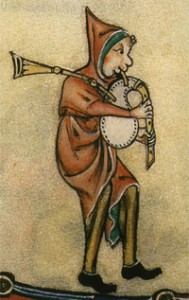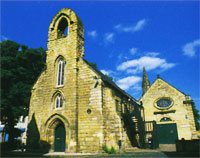Welcome to the website of the Morpeth Chantry Bagpipe Museum.
This unusual museum specialises in the history and development of Northumbrian small pipes and their music. They are set in the context of bagpipes around the world – from India to Inverness.
An ingenious sound system brings the pipes to life – each visitor may listen to the music through personal headphones and learn the difference between a rant and a reel.
An excellent selection of recorded and sheet music on sale and parent’s pack gifts are also available.
In the middle ages a bridge was of vital importance to the guildsmen of the town. Tolls had to be collected for its maintenance and since religious services were also in demand, a chapel would be built nearby. The Chantry Chapel was  therefore built at the same time as the bridge, towards the end of the 13th century.
therefore built at the same time as the bridge, towards the end of the 13th century.
A grammar school was kept in the Chantry from the early 14th century, and in 1545 when King Henry VIII planned to deprive the chantries of their lands and income, Morpeth School gained a reprieve due to the probable influence of William Turner, the botanist who was said to be educated at the Chantry. In 1552 King Edward VI granted a charter for the free grammar school which allowed it to continue. The architect John Dobson carried out further work in 1827 and The Grammar School continued until 1858.
The Chantry has now been restored to its former glory and is an eloquent reminder of the heart and soul of medieval Morpeth.


